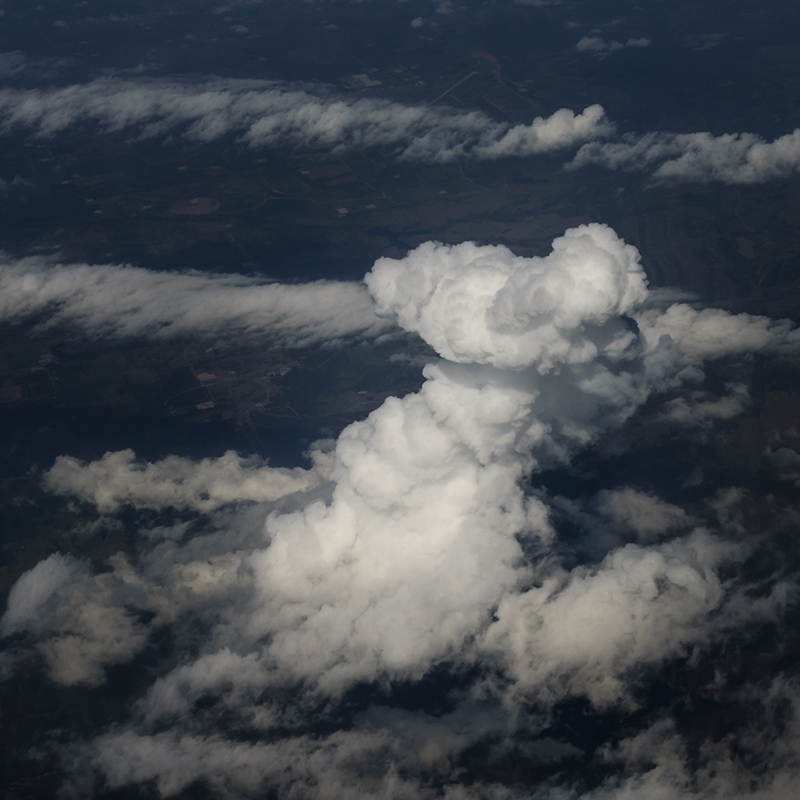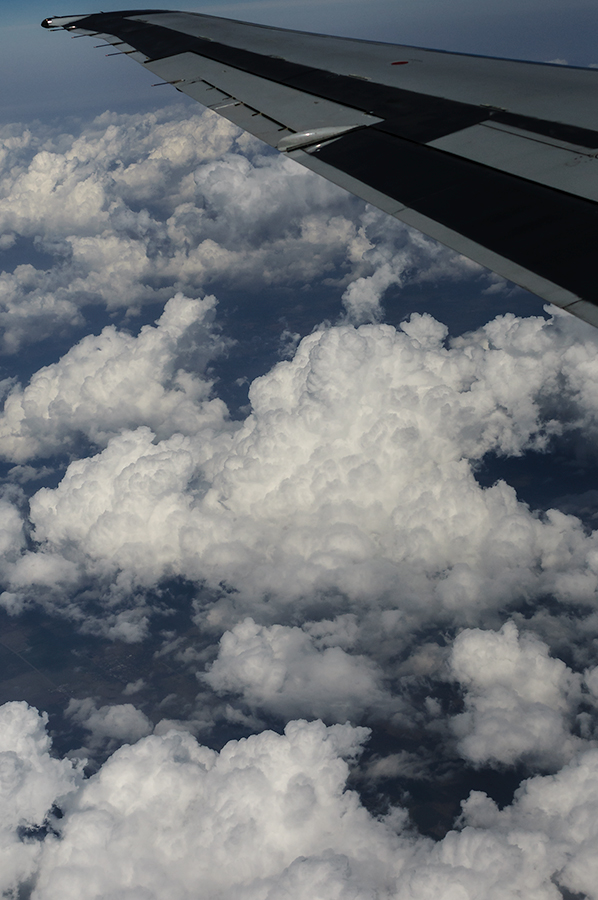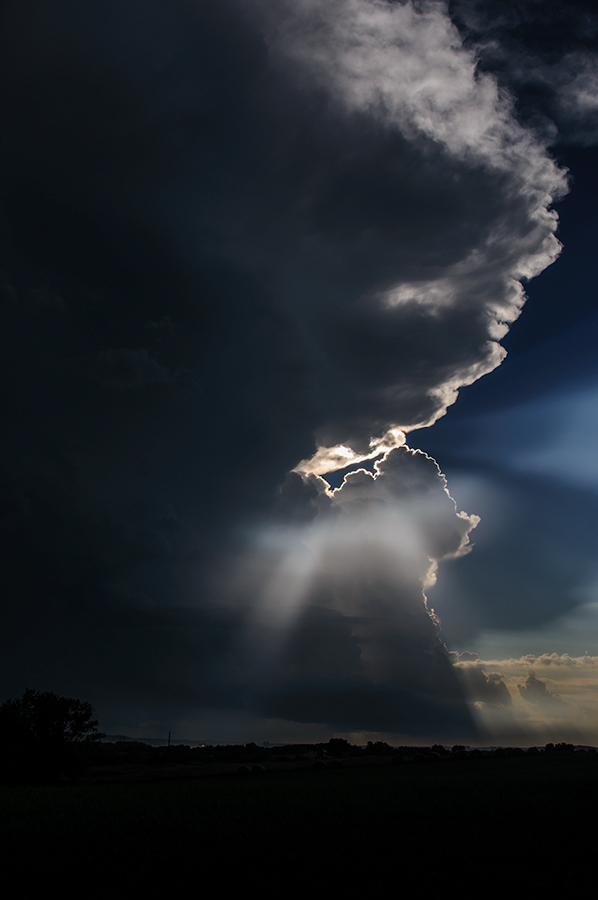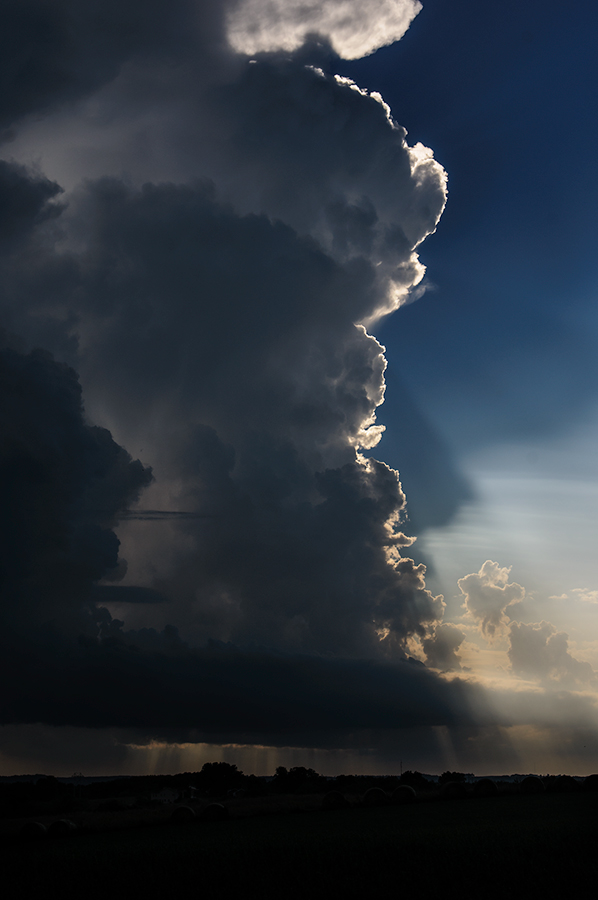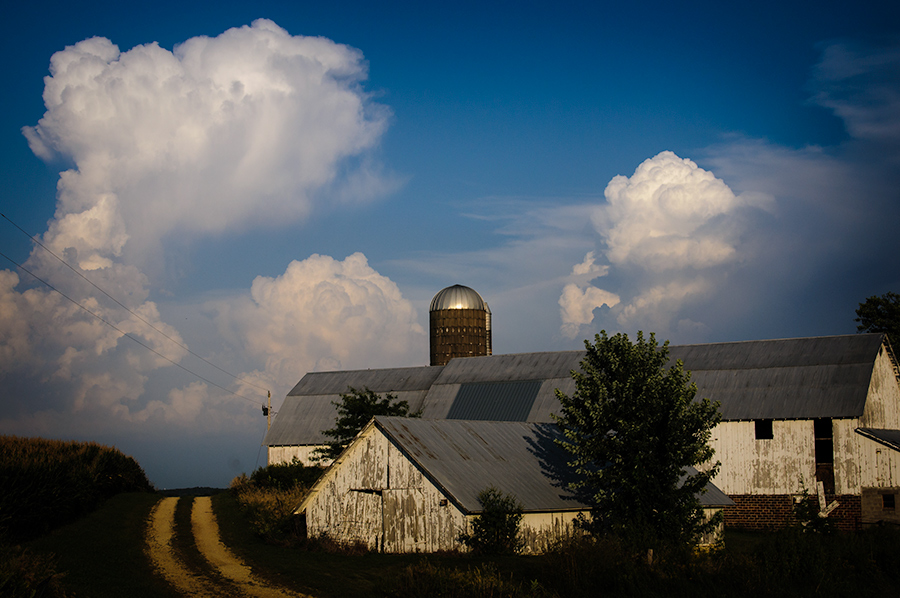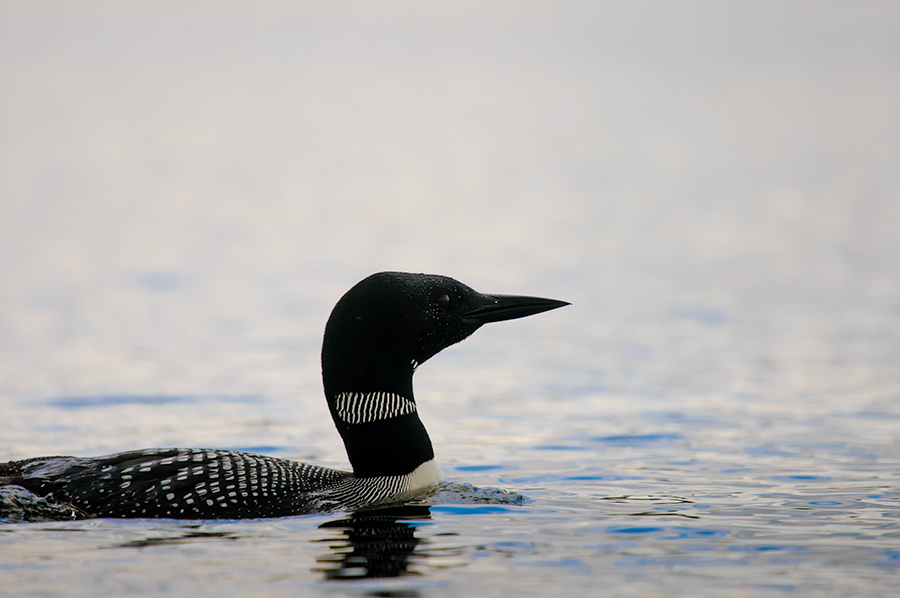
This post was supposed to be published last night already but another line of thunderstorms rolled over the country and I rather preferred to unplug the computer. We have the typical June weather with intensive periods of sun interrupted by thunderstorms and rain. The best way to deal with it from a photography standpoint is to go for the right subject, clouds when a storm is near or wildlife during overcast and sunny periods.
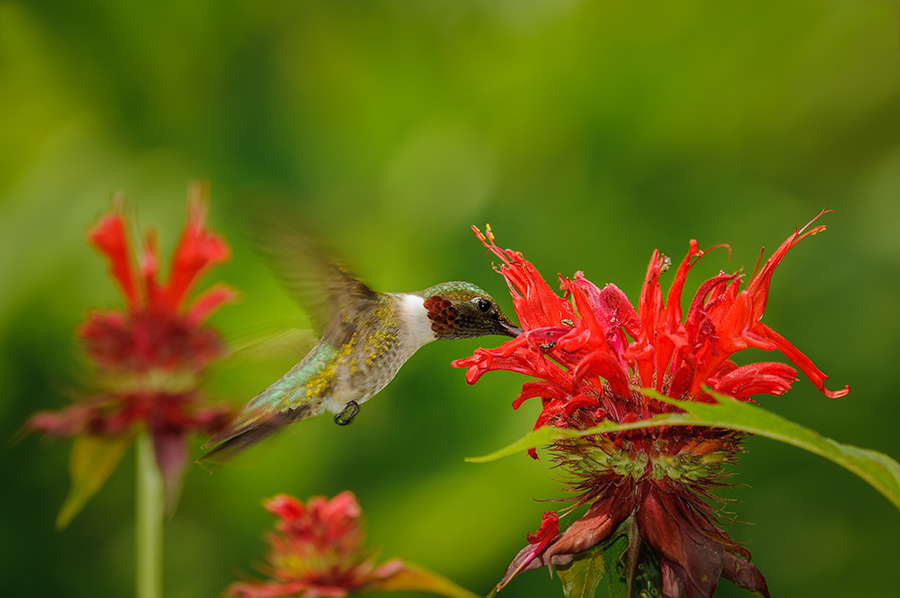
There are two ways to attract hummingbirds to a yard, you either hang feeders with artificial nectar (sugar dissolved in water will do it) or you plant flowers that the hummingbirds like because of its nectar. We do both. Joan has done a great job of planting a patch with Monarda, better known as Bee Balm. This flower attracts the little birds not just because of its color but it is obviously a good source for the liquid food they need.
Making a sharp image of a hummingbird in flight is kind of a challenge. Their wing beats can go up to 100 beats per second. The key is again using “peak of action”, the short moment when the body is not in motion while they hover and drink out of the flower. I’m using a fill flash for the colors and therefore do not shoot in continuos mode. As always, the eye has to be sharp in wildlife photography. The motion blur of the body and wings tells the story about what kind of dynamic these tiny birds have…








